Gin Bottling: Production Line Guide
Setting up a gin bottling production line is a significant venture for distilleries looking to scale their operations and meet market demand. With gin’s increasing popularity, an efficient and high-quality bottling line can significantly boost profitability. This guide explores the necessary steps, key machinery, and best practices for establishing a successful gin bottling production line.
Types of Gin Suitable for Bottling
Gin comes in various styles, each with unique characteristics. London Dry, Old Tom, and New Western Dry gins have different flavour profiles and production methods, impacting their bottling requirements. Understanding these distinctions helps in tailoring the bottling process to preserve the unique qualities of each gin type.
London Dry Gin Production
London Dry Gin is known for its classic, juniper-forward flavour. The production process involves distilling the base spirit with natural botanicals, primarily juniper berries, without adding any artificial ingredients. This type of gin requires precise control over the distillation process to ensure consistency in flavour. Bottling London Dry Gin involves using airtight seals to preserve the crisp, clean taste and prevent oxidation.
To accommodate this process, filling machines need to ensure that the spirit is dispensed with high accuracy to maintain the intended volume and quality. Capping machines must provide a secure seal to prevent contamination and preserve the gin’s integrity. Furthermore, labelling machines can be customised to handle various label types that highlight the premium quality of London Dry Gin.
Old Tom Gin Production
Old Tom Gin has a slightly sweeter profile compared to London Dry Gin. It is often made by adding a touch of sugar or using botanicals that impart a natural sweetness. The production method can include distillation or compound mixing, where flavours are added post-distillation. Bottling Old Tom Gin involves careful measurement to maintain the balance of sweetness and botanicals, ensuring that the product remains true to its traditional style.
For bottling Old Tom Gin, the machinery needs to adjust for the viscosity differences due to added sugars. Filling machines must be capable of handling these variances without compromising on the filling accuracy. Capping machines ensure that each bottle is securely sealed to maintain the product’s quality. Labelling machines should be capable of applying labels that reflect the unique, artisanal nature of Old Tom Gin, ensuring proper alignment and adherence.
Essential Steps in Gin Bottling
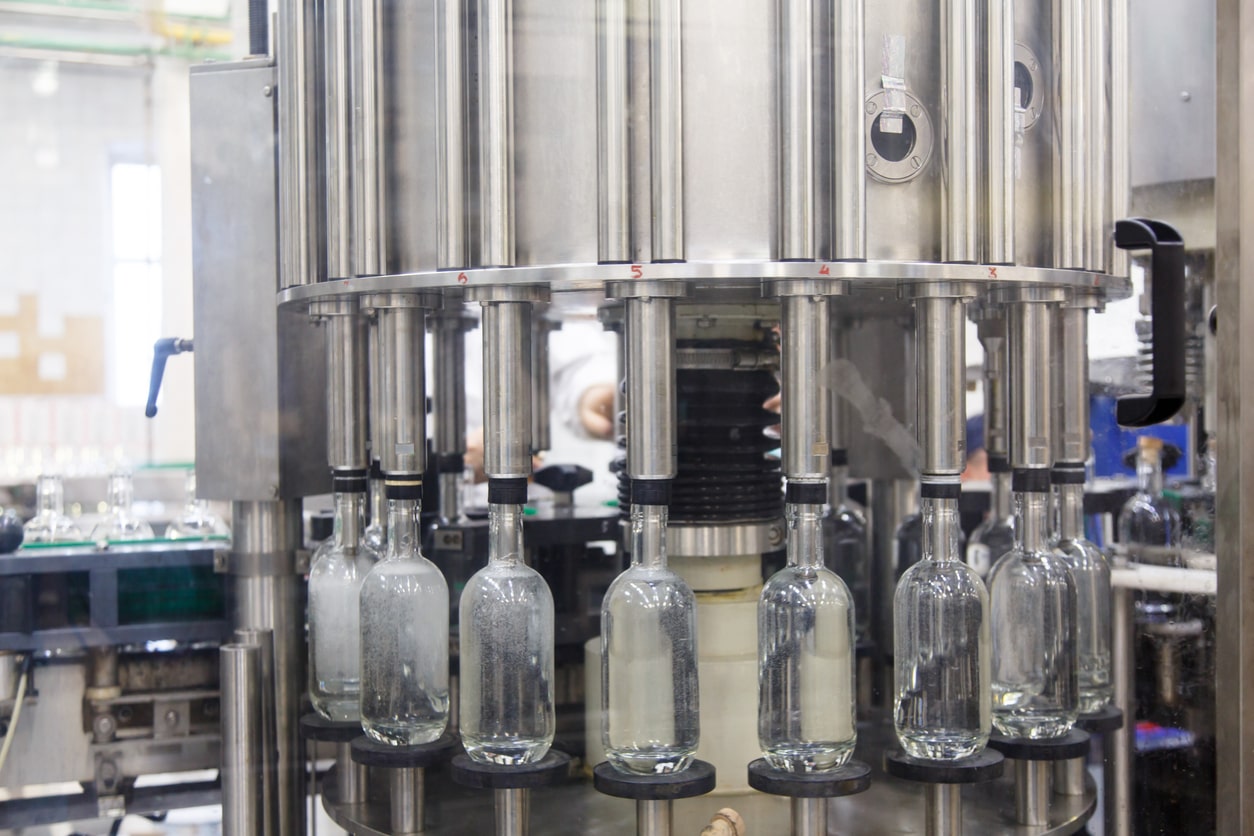
Recipe Consistency
Maintaining consistency in gin recipes is vital for brand integrity. The bottling process must ensure that each bottle contains a uniform product, reflecting the carefully crafted flavour profile of the gin. This involves precise measurement and mixing, with rigorous quality control at every stage. Automated systems play a crucial role in this process, using advanced technology to measure and mix ingredients accurately. This ensures that each batch of gin has the same taste and quality, preserving the distinct characteristics that consumers expect from the brand.
Quality Control
Quality control is crucial throughout the bottling process to ensure the final product meets high standards. This includes testing for flavour, alcohol content, and clarity. Automated systems help maintain consistency by detecting any deviations from the standard. Sensors and real-time monitoring equipment can identify issues such as incorrect fill levels, cap placement, or label alignment. Regular sampling and laboratory analysis further ensure that the gin adheres to quality benchmarks, providing a safeguard against potential flaws that could affect the product’s marketability and consumer satisfaction.
Sterilisation and Priming
Before the bottling process begins, it’s essential to sterilise the bottles to ensure they are free from contaminants. This step often involves a bottle rinser that cleans and primes the bottles with a small amount of gin before they are filled completely. This practice not only ensures the purity of the product but also prepares the bottles to receive the final fill without compromising the gin’s quality.
Filling and Sealing
The filling process must be precise to avoid overfilling or underfilling, which can lead to product loss and inconsistencies. Modern filling machines are designed to handle various bottle sizes and shapes, ensuring that each bottle receives the exact amount of gin. Following filling, sealing the bottles properly is critical to prevent leakage and contamination. Whether using corks, screw caps, or synthetic stoppers, the sealing process must be thorough and reliable.
Labelling and Packaging
Labelling is not just about compliance with regulations; it’s also about branding and market appeal. Labels must be applied accurately to reflect the quality and sophistication of the gin. Labelling machines ensure that labels are placed consistently and securely on each bottle. After labelling, the bottles are packaged for distribution. This step often involves automated cartoning and palletising systems that prepare the products for safe and efficient transportation.
Compliance and Documentation
Adhering to regulatory requirements is a critical aspect of gin bottling. This includes maintaining detailed records of production batches, quality control tests, and ingredient sourcing. Proper documentation ensures traceability and compliance with industry standards, protecting the brand and ensuring consumer safety.
Final Inspection
Before bottles leave the facility, a final inspection is conducted to ensure that all products meet the required standards. This inspection checks for label accuracy, seal integrity, and overall presentation. Any bottles that do not meet the standards are removed from the batch, ensuring that only the highest quality products reach the market.
By following these essential steps, distilleries can ensure that their gin bottling lines produce consistent, high-quality products that meet both consumer expectations and regulatory standards.
Key Gin Bottling Machinery
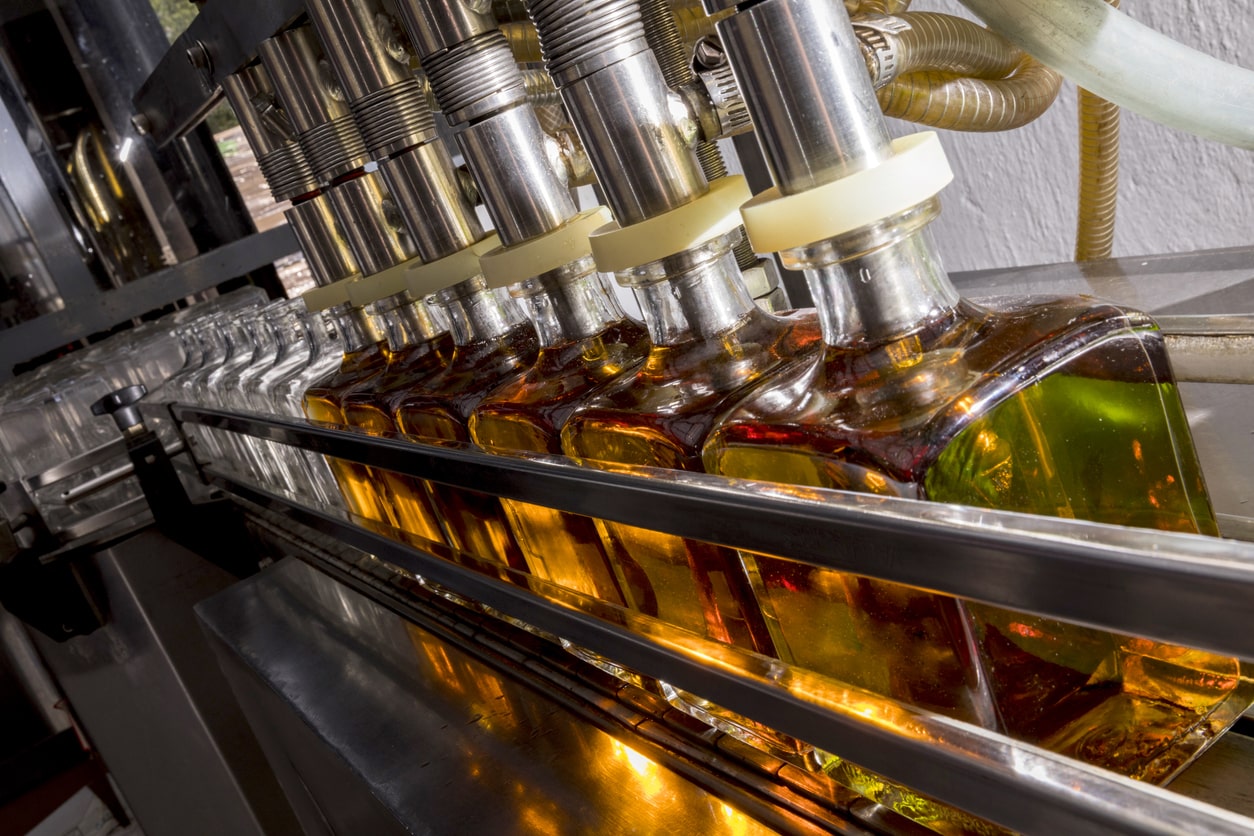
Bottle Sorting Machines
Bottle sorting machines play a crucial role in organising and orienting bottles for the filling process. They ensure that bottles are correctly aligned and fed into the filling machine, minimising downtime and increasing productivity. Bottle Sorting Machines streamline the initial phase of the bottling line, setting the stage for a smooth operation.
See how gin bottles are fed into a uniform line with this bottle feeding conveyor:
Filling Machines
The filling machines are the core of any bottling line, responsible for accurately dispensing the gin into bottles. Precision is crucial to ensure each bottle contains the correct volume, adhering to legal standards and reducing wastage. The importance of filling machines lies in their ability to handle different viscosities and ensure precise fill levels.
See how gin bottles are filled with this fully automatic quad-head filling system:
You can find out more about the FL-14 fully automatic filling machine for gin by clicking here.
Capping Machines
Capping machines secure closures onto bottles, ensuring they are airtight and tamper-proof. This step is critical for maintaining the shelf life and safety of the bottled gin. The importance of capping machines extends to handling various types of closures, including corks and screw caps, providing flexibility for different packaging standards.
See a gin T-cork capping machine in action here:
You can find out more about the CP-10D t-cork capping machine for gin by clicking here.
Or see a Pick and Place Screw Cap Capping Machine in action here:
You can find out more about the CP-10D screw-cap capping machine for gin by clicking here.
Labelling Machines
Labelling machines apply labels to bottles with precision and consistency. Proper labelling is essential for compliance with regulations and effective branding. The importance of labelling machines lies in their ability to ensure that labels are stunning, properly aligned, and securely adhered to the bottles, enhancing the product’s visual appeal and brand identity.
You can see bottles being labelled by this automated wraparound labeller here:
Find out more about the PL-501 wraparound labelling machine for gin by clicking here.
Sleeving Machines
Sleeving machines add an extra layer of packaging by applying shrink sleeves to bottles. These sleeves provide tamper-evident seals and enhance the visual appeal of the product. Sleeving machines are particularly important for products requiring additional branding elements or protection, ensuring sleeves are applied uniformly and tightly.
Shrink Wrapping Machines
Shrink wrapping machines bundle multiple bottles together, offering protection during transportation and storage. This step is essential for maintaining product integrity and facilitating efficient logistics. The importance of shrink wrapping machines lies in creating durable and secure packaging that can withstand handling and environmental factors.
Cartoning Machines
Cartoning machines package bottles into cartons, making them ready for distribution. This step involves precise handling and placement to avoid damage. Cartoning machines are crucial for efficient and safe packaging, ensuring bottles are securely enclosed and protected.
Palletising Systems
Palletising systems stack and organise cartons onto pallets for efficient storage and transportation. Automated palletising systems enhance productivity and reduce manual labour, optimising space usage and ensuring stability during transport.
Steps to Set Up a Gin Bottling Line
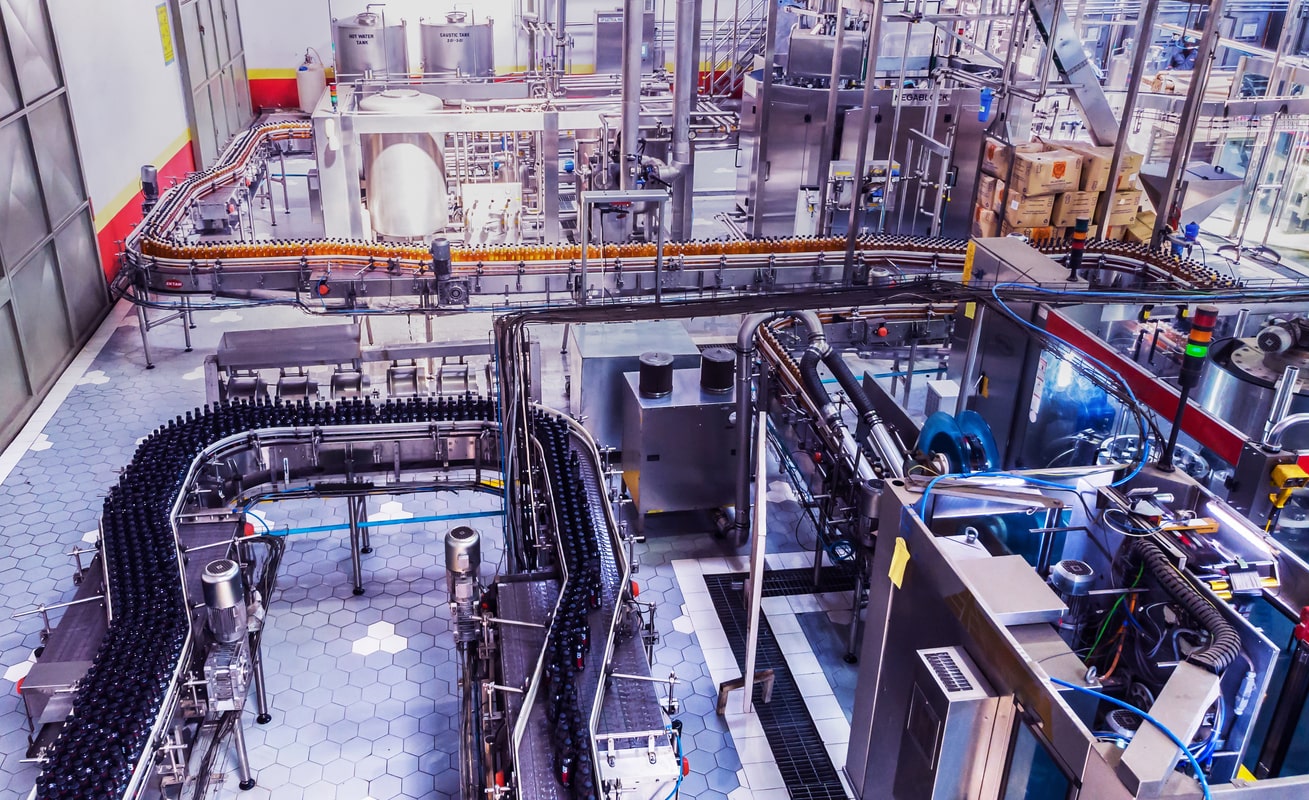
Planning and Design
Thorough planning and design are the first steps in setting up a gin bottling line. This involves assessing production needs, choosing suitable machinery, and designing the layout for optimal workflow. Considerations include space requirements, utility connections, and future scalability. It is also crucial to determine the level of production required, such as whether a fully automated line or a semi-automated setup is more appropriate. Identifying which parts of the production process are most beneficial to automate can help optimise efficiency and control costs. For instance, automating high-precision tasks like filling and capping can significantly enhance production speed and consistency.
Acquiring Machinery
Once the design is finalised, acquiring the necessary machinery is the next step. Partnering with reputable suppliers ensures access to high-quality equipment that meets industry standards. Advanced Dynamics is an excellent choice for sourcing your bottling line equipment. We offer a range of high-quality, cost-effective machines, along with comprehensive support and warranties. It’s crucial to choose machinery that aligns with production goals and budget constraints. Advanced Dynamics’ commitment to quality and service ensures that your bottling line operates efficiently and reliably, providing excellent value and peace of mind.
Installation and Testing
Proper installation and testing of the machinery are critical to ensure smooth operation. This phase includes setting up the equipment, calibrating systems, and conducting trial runs. Identifying and resolving any issues at this stage prevents future disruptions. The team at Advanced Dynamics can assist with this step to ensure that all machinery is properly set up and working efficiently. Our expertise ensures that your bottling line is optimised for maximum productivity and minimal downtime, helping you achieve a seamless and effective production process.
Training and Safety
Training staff on the operation and maintenance of the bottling line is essential for safety and efficiency. Comprehensive training programs should cover machine handling, troubleshooting, and emergency procedures. Emphasising safety protocols reduces the risk of accidents and enhances productivity.
Automation in Gin Bottling
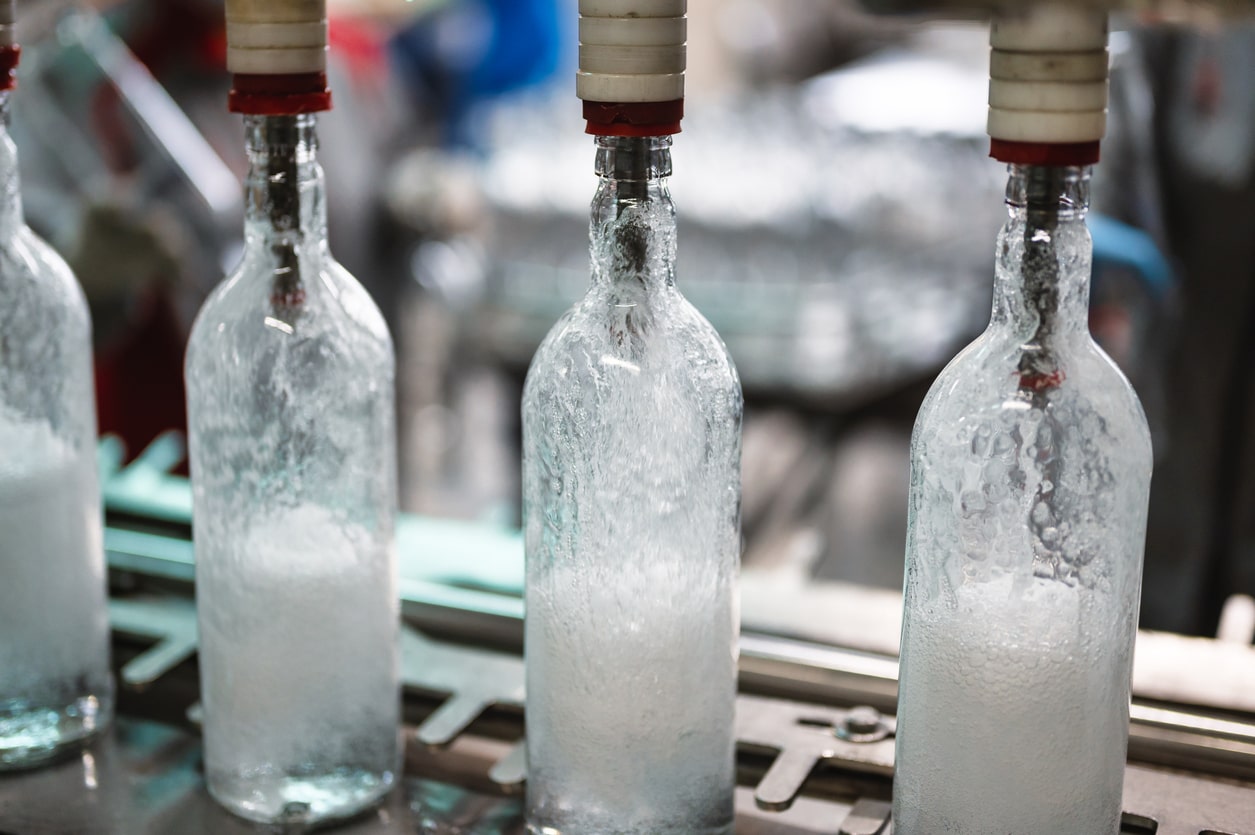
Benefits of Automation
Automation offers numerous benefits, including increased production speed, consistent quality, and reduced labour costs. Automated systems can handle repetitive tasks with precision, allowing human workers to focus on more complex responsibilities. This leads to higher efficiency and profitability.
Costs and ROI
The initial investment in automation can be significant, but the long-term returns often justify the expense. Businesses can achieve a quick return on investment (ROI) through increased production capacity, reduced waste, and lower operational costs. Automated lines also enable better scalability, accommodating future growth.
Case Studies of Automated Gin Bottling Lines
Examining case studies of successful automated bottling lines provides valuable insights into the potential benefits and challenges. One such example is Atom Brands, which highlights the impact of automation on their bottling line. By implementing Advanced Dynamics’ automated solutions, Atom Brands streamlined their operations, reduced manual labour, and significantly increased their output. This case study demonstrates how tailored automation solutions can enhance productivity and profitability in the gin bottling industry.
Profitability of a Gin Bottling Line

Profit Margins
Profit margins in gin bottling depend on various factors, including production costs, pricing strategies, and market demand. By optimising efficiency and reducing waste, businesses can enhance their profit margins. For instance, producing 1,000 bottles per day and selling them at £10 each can generate a substantial monthly revenue of approximately £300,000. This highlights the potential profitability of an efficient gin bottling line, making it a lucrative venture for distilleries aiming to scale their operations.
Economies of Scale
Scaling production allows businesses to benefit from economies of scale, reducing per-unit costs and increasing profitability. Larger production volumes can lead to better supplier terms, lower material costs, and more efficient use of machinery.
Scaling Gin Bottling Operations

Expanding Production Capacity
As demand grows, expanding production capacity becomes a priority. This may involve adding new machinery, increasing shifts, or investing in larger facilities. Strategic planning ensures that scaling operations align with market needs and business goals. Advanced Dynamics offers machinery that can scale with your business. You can start with our cost-effective semi-automated machines, which are perfect for lower initial production volumes. As your business grows, you can upgrade to more advanced machines that achieve higher production volumes and greater automation, allowing you to meet increased demand efficiently.
Diversifying Product Lines
Diversifying product lines can help businesses capture new market segments and enhance revenue streams. Introducing new types of gin or packaging options can attract a broader customer base and increase overall profitability.
Maintenance and Upkeep of Bottling Equipment
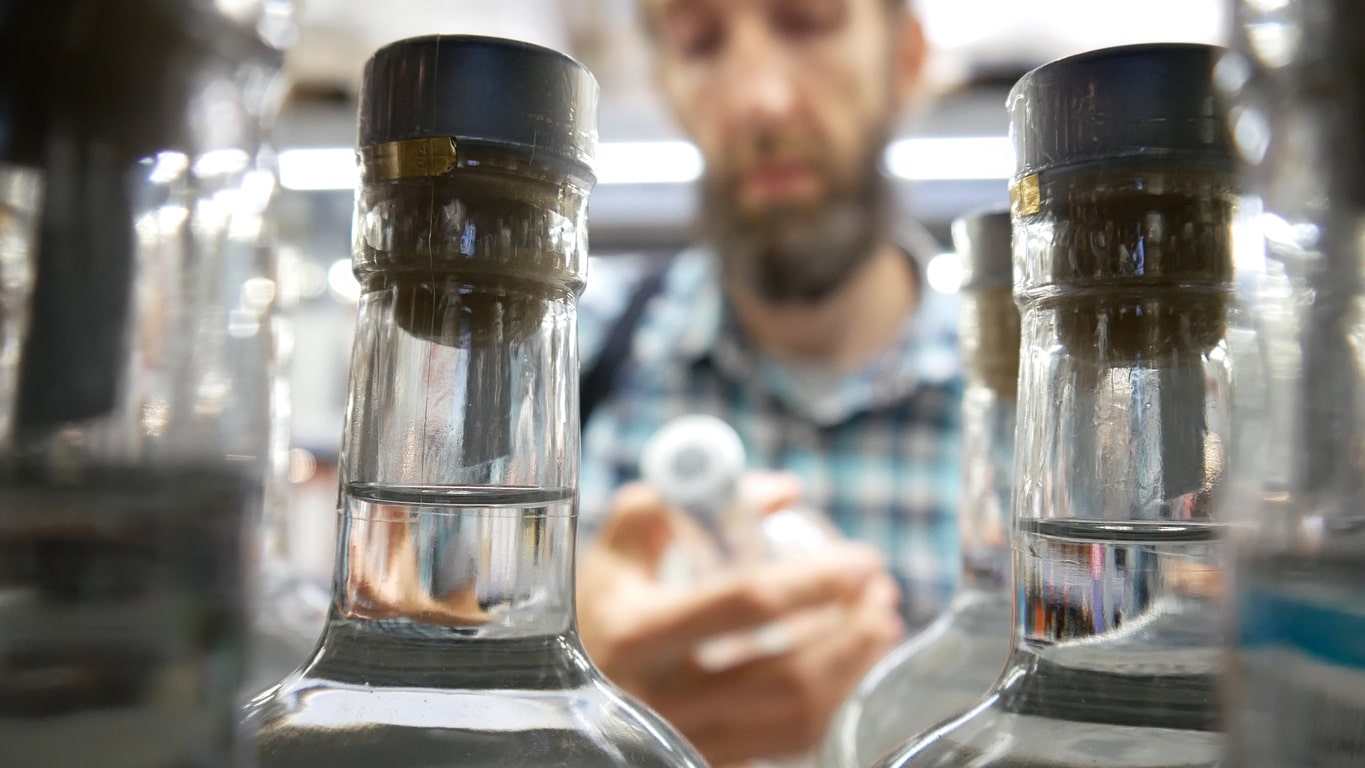
Routine Maintenance Tips
Regular maintenance is essential to keep bottling equipment in optimal condition. Routine checks, cleaning, and lubrication prevent breakdowns and extend the lifespan of machinery. Implementing a maintenance schedule ensures consistent performance and reduces downtime. Additionally, Advanced Dynamics offers a comprehensive five-year warranty programme, providing businesses with peace of mind and support for maintaining their equipment. This programme covers routine maintenance, servicing, and any necessary repairs, ensuring that your bottling line remains in top condition.
Troubleshooting Common Issues
Understanding common issues and their solutions can minimise disruptions in production. Staff should be trained to identify and address problems quickly, ensuring that minor issues do not escalate into major disruptions. Keeping spare parts on hand can also expedite repairs. The five-year warranty programme from Advanced Dynamics includes support for troubleshooting and resolving common equipment issues, helping businesses maintain smooth operations and avoid costly downtime.
Future Trends in Gin Bottling
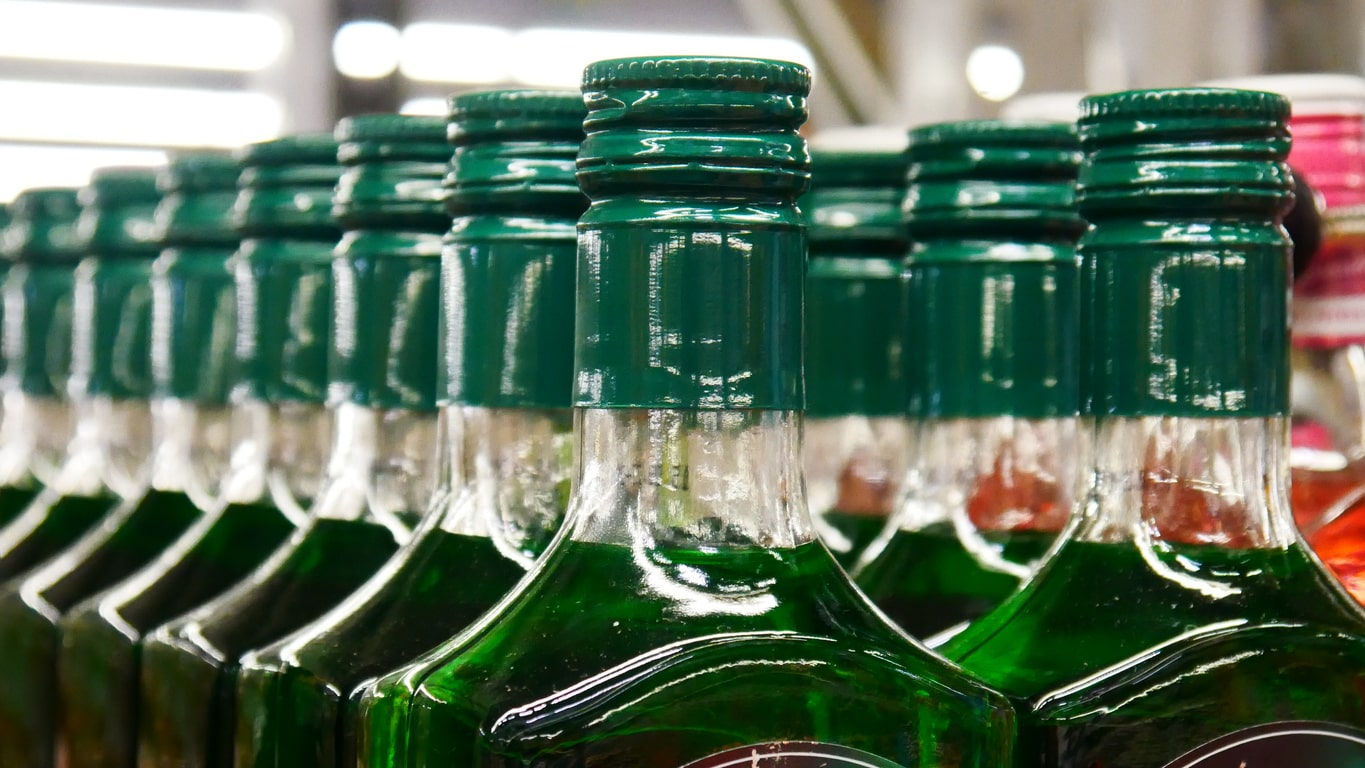
Sustainability Initiatives
Sustainability is becoming increasingly important in the alcohol industry. Implementing eco-friendly practices, such as using recyclable materials and reducing energy consumption, can enhance brand reputation and appeal to environmentally conscious consumers.
Technological Advancements
Technological advancements are continually reshaping the gin bottling industry. Innovations in automation, data analytics, and quality control are enhancing efficiency and product quality. For instance, the integration of Internet of Things (IoT) technology into bottling lines enables real-time monitoring and predictive maintenance, significantly reducing downtime and operational costs. Embracing these technologies allows businesses to stay competitive by optimizing operations and meeting evolving market demands.
Frequently Asked Questions
What are the key steps to set up a gin bottling line?
Key steps include planning and design, acquiring machinery, installation and testing, and training and safety protocols.
How does automation benefit gin bottling?
Automation increases production speed, ensures consistent quality, and reduces labour costs, leading to higher efficiency and profitability.
What types of gin are suitable for bottling in this guide?
This guide focuses on bottling various types of gin, including London Dry, Old Tom, and New Western Dry, each with unique bottling requirements.
What are the challenges in gin bottling?
Challenges include maintaining recipe consistency, quality control, regulatory compliance, and managing production efficiency.
How can businesses ensure the profitability of their bottling line?
Optimising efficiency, reducing waste, and leveraging economies of scale can enhance profitability. Automation also contributes to cost savings and increased revenue.
What maintenance is required for bottling equipment?
Routine maintenance, including regular checks, cleaning, and lubrication, is essential to keep bottling equipment in optimal condition and prevent breakdowns.
Ready To Set Up Your Gin Bottling Production Line?
Setting up a gin bottling production line is a significant investment that can yield substantial returns for distilleries. By understanding the types of gin suitable for bottling, addressing challenges, and leveraging essential machinery, companies can optimise their operations and enhance profitability. Automation plays a crucial role in achieving consistency and efficiency, making it a valuable consideration for modern bottling lines. With careful planning and ongoing maintenance, businesses can scale their operations and meet the growing demands of the gin market.
If you’re ready to embark on this profitability journey and need assistance in acquiring the right machinery at competitive prices, please contact us.



